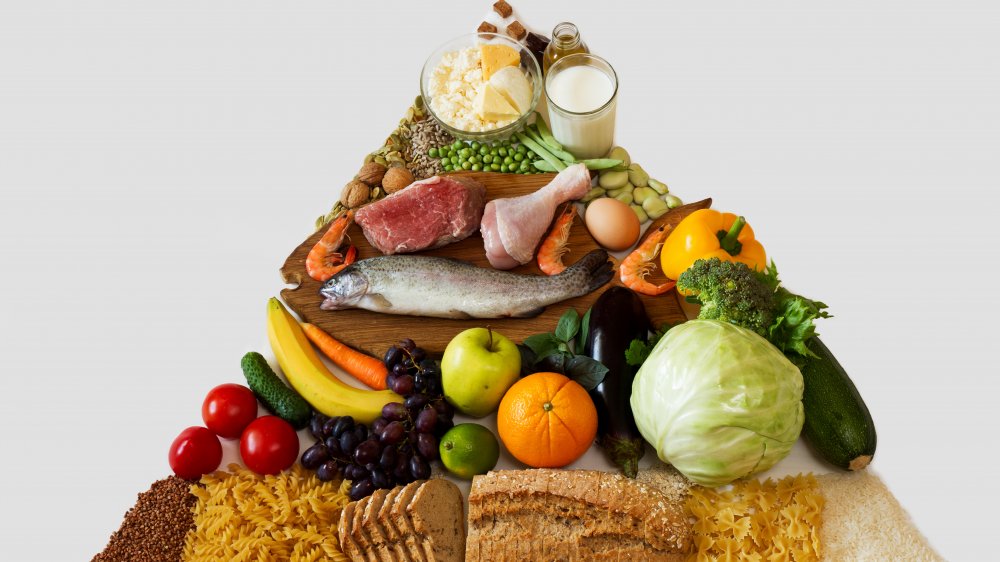Here's Why The Dietary Guidelines You Learned In School Were Wrong
You may remember learning about the food pyramid in school. Instituted in 1992, according to Scientific American, it was plastered in our classrooms and books — reminding us that we needed to eat a lot of bread and grains and to limit the fun stuff like sweets. However, if you grew up in the '90s you may not know that the U.S. Department of Agriculture released a new Food Guide Pyramid in 2005. But what exactly was wrong with the guidelines we learned about in school? Apparently a lot.
According to Healthyway, the 1992 Food Guide Pyramid included six blocks that featured a base of grains (6 to 11 servings), followed by fruit (2 to 4 servings) and vegetables (3 to 5 servings). Next was the dairy group (2 to 3 servings), the the protein section (2 to 3 servings), and the final little triangle was the fats group. Unfortunately, this approach led to some major issues, like everyone thinking all fats are terrible for you, which we now know is not true. Instead, people began to replace potentially healthy fats with highly processed low-fat junk food. Another problem was the pyramid prioritized eating carbohydrates — hello pasta! But if something sounds too good to be true, it probably is.
Getting the portions wrong
This emphasis on carbs resulted in people consuming way too many calories, starches and sugar. The problem is the pyramid failed to list what the portion size should be for each food group. "I think people may have thought the amount of food they put on their plate was a serving, when actually what we put on our plate is our portion size, which may contain several servings," Pediatric registered Dietitian, Amanda Kendall told Healthyway. UCLA David Geffen School professor Adrienne Youdim explained another issue was that the diagram didn't distinguish between the various types of carbs, like simple, complex or processed. These are not all the same and that was not made clear.
Another mistake was that the pyramid put the symbols for fats, oils and sweets all throughout the food groups. This led many to believe it was okay to eat these types of things with all other pyramid categories. "Most people already eat more fat and sugar than they should — we certainly didn't need any encouragement or endorsement to eat more," registered dietician, Susan Bowerman explained.
The 2005 pyramid cut the fats and oils group out completely and emphasized moderation and the importance of staying active. But it still gave too much weight to carbs and failed to inform people about nutrition, according to Scientific American. Youdim explained that the key is practicing portion control and being mindful that all of the little extras, like condiments, can add up.

